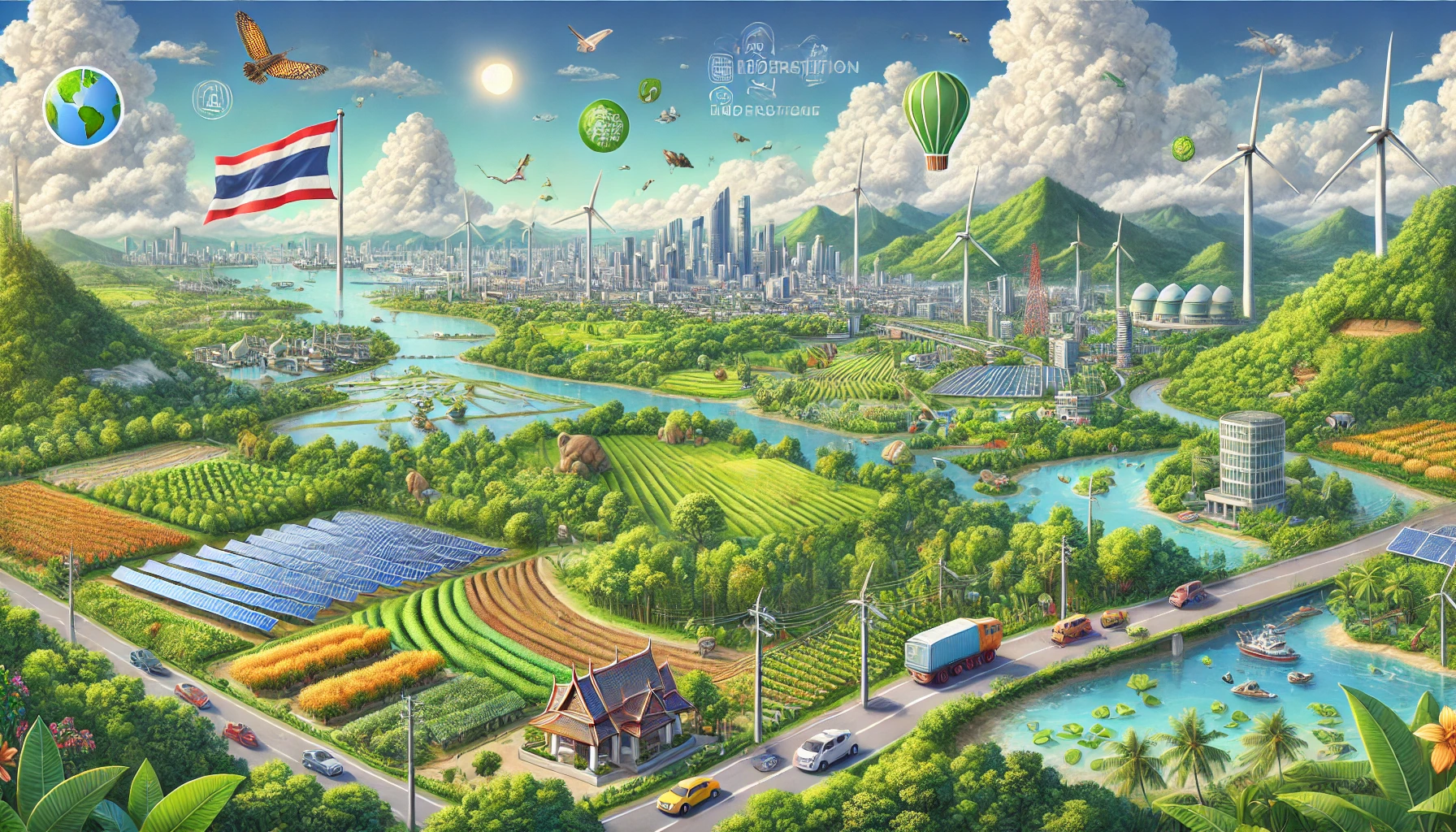World Bank: Thailand Can Turn Climate Risks into Green Growth Opportunities
The report warns that without additional adaptation measures, these impacts could reduce Thailand’s GDP by 7 to 14 percent by 2050 compared to baseline projections.

- Country:
- Thailand
Thailand stands at a crossroads in its development journey: while facing intensifying climate risks that threaten livelihoods and economic growth, the country also has a chance to become a regional leader in green innovation and sustainable development, according to the World Bank’s new Country Climate and Development Report (CCDR).
The report underscores that smart, timely investments in adaptation, decarbonization, and green industries can transform Thailand’s climate challenge into an opportunity for long-term prosperity — helping the country achieve its vision of becoming an inclusive, high-income, and low-carbon economy.
Rising Climate Risks Threaten Economic Stability
Thailand is already one of the ten most flood-prone countries in the world, and its vulnerability is rising sharply with climate change. The Chao Phraya River Basin, home to 40 percent of the population and two-thirds of national GDP, faces mounting threats from floods, heat stress, water shortages, and coastal erosion.
The report warns that without additional adaptation measures, these impacts could reduce Thailand’s GDP by 7 to 14 percent by 2050 compared to baseline projections.
Coastal erosion is already affecting 30 percent of the Thai coastline, posing a major risk to the tourism industry — one of Thailand’s largest economic sectors — with potential losses of up to US$1 billion per year by the mid-2040s. Meanwhile, worsening water scarcity in agricultural and industrial regions, such as the Eastern Economic Corridor, threatens both food security and industrial output.
Economic and Environmental Gains from Climate Action
While the costs of inaction are steep, the report finds that proactive investment in climate adaptation and mitigation can yield significant economic and social returns.
“Investments in flood mitigation, water security, coastal protection, climate-smart agriculture, and cooling could raise annual GDP by 2–3 percent by 2040, and by 4–5 percent by 2050, compared with a business-as-usual scenario,” said Kim Alan Edwards, World Bank Senior Economist and lead author of the report.
Such actions would not only reduce the risk of climate-related disasters but also create jobs, enhance food security, and strengthen social resilience. Edwards emphasized the importance of scaling up social protection to help vulnerable populations recover from climate shocks, noting that “resilient communities are the cornerstone of sustainable growth.”
Decarbonization and Energy Transition
On the mitigation side, the report highlights that decarbonization offers major benefits for Thailand’s economy — including lower power and transport costs, improved air quality, and greater energy security.
Thailand’s transition to clean energy is already underway. The country has set carbon neutrality and net zero goals for 2050 and 2065, respectively, and is advancing policies to reduce emissions intensity. The CCDR recommends introducing a comprehensive carbon pricing mechanism, complemented by targeted investments in renewable energy and electrified transport systems, to help Thailand achieve these targets.
“Thailand’s future competitiveness will hinge on reducing the emission intensity of its economy and shifting production toward greener goods and services — steps that can create new industries, generate high-quality jobs, and keep Thailand attractive to investors in a low-carbon world,” said Melinda Good, World Bank Division Director for Thailand and Myanmar.
Green Exports: A New Engine for Growth
The report also points to the enormous potential for green trade and exports to drive Thailand’s next wave of growth. The country is already a global player in sustainable manufacturing — supplying around 4 percent of global solar PV exports and leading in eco-friendly air-conditioning systems. It is also fast emerging as a hub for electric vehicle (EV) production in Southeast Asia.
However, green products still account for less than 10 percent of Thailand’s total exports. The World Bank recommends targeted reforms to remove market-entry barriers, reduce distortionary tariffs and fossil fuel subsidies, and promote technological innovation and skills training. If implemented, these steps could increase green exports by 2–3 percent of GDP by 2030, reinforcing Thailand’s competitive edge in the global low-carbon economy.
Financing the Transition
Thailand’s climate ambitions will require approximately US$219 billion in climate-related investments over the next 25 years — equivalent to about 2.4 percent of cumulative GDP. While the financing needs are significant, the report stresses they are achievable through a mix of public and private funding, carbon pricing, and public revenue reforms.
To mobilize this scale of investment, the CCDR calls for:
-
Strengthening the role of public financial institutions in leveraging private capital;
-
Developing green bonds and sustainable finance frameworks;
-
Encouraging foreign direct investment in clean technology sectors; and
-
Promoting public-private partnerships for large-scale adaptation projects.
A Strategic Vision for Resilient Growth
The World Bank’s CCDR for Thailand aligns with the country’s broader “Building Thailand’s Future Today” initiative — a partnership launched ahead of the IMF–World Bank Annual Meetings 2026 in Bangkok. This flagship effort seeks to advance the dual agenda of economic resilience and sustainability through policy dialogue, research, and investment planning.
“Thailand is at an inflection point,” said Good. “By investing in resilience, decarbonization, and green competitiveness today, Thailand can not only safeguard its economy from climate shocks but also secure its position as a leader in sustainable growth across Asia.”
About the Country Climate and Development Reports (CCDRs)
The Country Climate and Development Reports are a flagship initiative of the World Bank Group, designed to integrate climate action into national development strategies. CCDRs provide governments with data-driven analysis, policy recommendations, and financing pathways to address climate risks and emissions reductions while fostering economic inclusion and growth.
These reports are intended to guide policymakers, private sector leaders, and international partners in aligning climate priorities with economic planning, ensuring that the transition to a low-carbon future supports social equity and long-term development.
For Thailand, the message is clear: climate action is not just an environmental necessity — it is an economic opportunity to redefine the nation’s growth trajectory and build a resilient, inclusive, and sustainable future.










